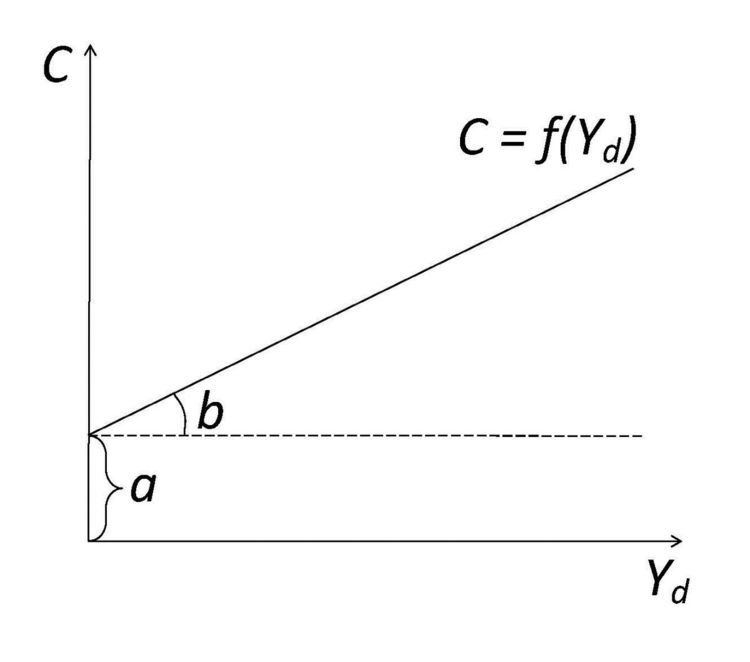 | ||
In economics, the consumption function describes a relationship between consumption and disposable income. Algebraically, this means
where
Criticism of the simplicity and irreality of this assumption lead to the development of Milton Friedman's permanent income hypothesis, and Richard Brumberg and Franco Modigliani's life-cycle hypothesis. But none of them developed a definitive consumption function. Friedman, although he received the Nobel prize for his book A Theory of the Consumption Function (1957), presented several different definitions of the permanent income in his approach, making it impossible to develop a more sophisticated function. Modigliani and Brumberg tried to develop a consumption function based on income received over a consumer's entire lifetime, but they and their followers ended in a formulation lacking economic theory. It is therefore full of proxies that do not account for the complex changes of today's economic systems.
Until recently, the three main existing theories, based on the income dependent Consumption Expenditure Function pointed by Keynes in 1936, were Duesenberry's (1949) relative consumption expenditure, Modigliani and Brumberg's (1954) life-cycle income, and Friedman's (1957) permanent income.
Some new theoretical works are based, following Duesenberry's one, on behavioral economics and suggest that a number of behavioural principles can be taken as microeconomic foundations for a behaviorally-based aggregate consumption function.
